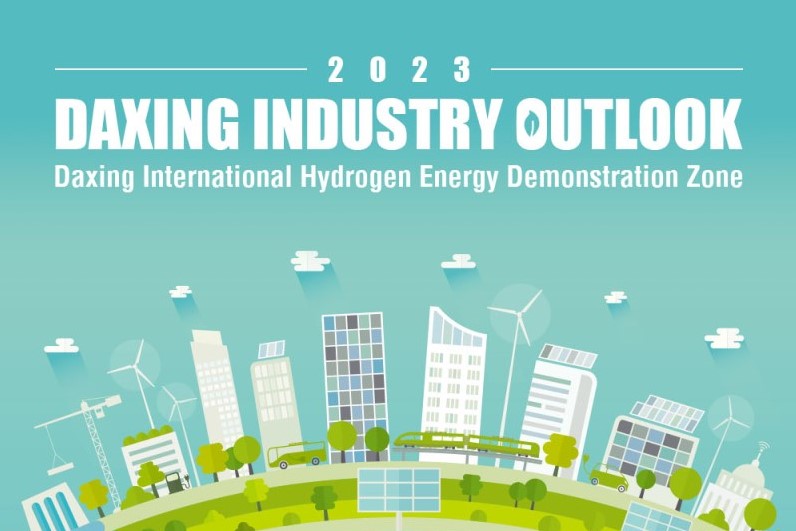High-tech industry fueling high-quality development in Yizhuang
Yizhuang, a suburb in southeastern Beijing, has created 18 percent of the city’s overall industrial output using only 2.8 percent of its land for industrial use, with an average industrial output of 20.5 billion yuan/square kilometer, six times the city’s average. The district also has an energy consumption rate of RMB 10,000 GDP per 0.14 tons of standard coal, which is only 40 percent of the city’s average. The Beijing Economic-Technological Development Area, with “high output, low land occupation, high efficiency, and low energy consumption”, is a forefront of high-end industry development in the city.
Over the course of 26 years since its establishment, as the only national-level economic-technological development area in Beijing the Beijing Economic-Technological Development Area (a.k.a. “Beijing Yizhuang”) has served as a window of opening-up and a main front of high-tech industrial development. Given the limitation of space, Yizhuang has focused on key national strategies, promoted industrial upgrades, and established strong technical and innovation capacity. The “Yizhuang Experience” serves as an example for other development areas.
Enhanced use of foreign investments
In 1991, the plan for a “Yizhuang Industrial Area” was finalized in the city. It proposed to bring in high-tech industries to meet demands of the capital city of Beijing and stimulate development in neighboring areas. In April 1992, the Beijing Economic-Technological Development Area broke ground.
It started out in a 3.8 square kilometer piece of farmland. In April 1994, officers of a dozen foreign-funded companies were invited to an investment proposal event held there. It marked the beginning of funding efforts of the development area.
“From the very start, the development area set the company screening standards as “five lows and two highs”, namely low land occupation, low pollution, low energy consumption, low water consumption, high technology, and high value-added,” according to a retired officer of the development area.
Wang Yanwei, head of the Development Area Investment Promotion Bureau, said that “when introducing projects, we focus on whether the company has a high-tech innovation capacity, and we check the credentials of their research and development teams.” After a “preliminary check”, an expert panel is responsible for reviewing and approving the projects. Only those passing their review are qualified for an official filing and approval. Then it is followed by five-step approval procedures. After that, the projects are subject to comprehensive assessment on industrial content, output value, taxation, employment, and biological and environmental protection on a regular basis.
Presently, the development area hosts over 20,000 companies, over 900 of which are foreign-funded companies. The companies and their products take up predominantly high-value ends on the industrial chain. Eighty-three of the world’s top 500 have established businesses here.
From point to chain
As a main front of high-end industries in Beijing, the development area, while determining priority industries for development, values the importance of national strategies and “originality”, and tries not to engage in repetitive construction.
To realize precise planning of industrial chains, the development area has formulated 32 “industrial chain illustrations”, which help with selection of proper projects. It has attracted the industrial leaders, utilized the Yizhuang SDIC Industrial Investment and Financing Platform, solicited key technologies and components, and led fast growth of the whole industrial chain.
In 2008, BOE Technology Group Co., Ltd. joined the development area. It has simultaneously supported a dozen international upper stream and lower stream companies such as Corning. The industrial mode of BOE featuring zero inventory and economy of scale has helped the company to gain remarkable growth momentum. And it was at the development area where it all started.
Now the development area has four pillar industries, digital information, equipment manufacturing, bio-engineering and pharmaceutical manufacturing, as well as automobile and transportation equipment manufacturing. It hosts 802 national-level high-tech companies, with much enhanced capital and technical density. In 2017, the four pillar industries realized output of RMB 305.32 billion, representing 91.7 percent of the total output of the development area.
New positioning
With total coverage of 60 square kilometers, the development area is anticipating a limitation on space. It has utilized resource integration advantages of industrial alliances, promotion associations, chambers of commerce, and other social organizations in order to reserve space for result transfer using a “cage for a bird” technique.
Due to shrinking markets for traditional printing, Beiren Group has made the loss-making business redundant, which has freed up space for an innovation park for intelligent robot manufacturing. As the robot business is concentrating in the park, it has become a smart manufacturing and innovation center for whole-industrial-chain functionalities of exhibition, trading, design, development, and testing.
Now more and more companies in conventional industries have readjusted the space they occupy. The development area is allocating more space for innovation-oriented companies in terms of land, energy, funding, and human resources, under a “six-in-one” technology innovation service system for “industrial alliance + research institute + patent pool + technology trading platform, funds + featured industrial park”.
Since the 18th National Congress of the CPC, the development area has transferred about 40,000 patented technologies, with a transfer rate high at over 90 percent. It has also developed over 240 world-leading new products. By the year 2020, the development area will establish over 20 world-class innovation centers, update testing and human resources supportive services, and involve social professional bodies in result transfers.
According to the planning, the development area will be further “expanded in size”. It will have a technology transfer area, technological innovation demonstration area, enhanced reform and pilot area, high-end industrial area, and livable green downtown area, together making a new landmark of future development.

